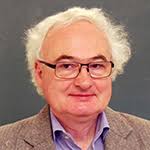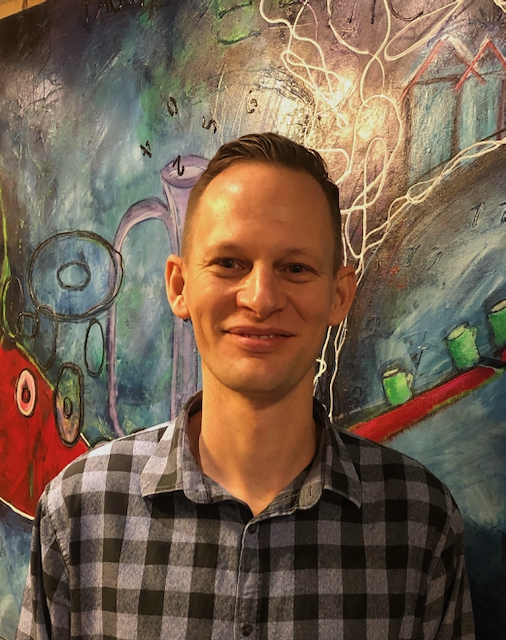This meeting will bring together senior and early career data science researchers from Aarhus University and University of Copenahgen. Both groups are internationally renowned for their strong research profile in data science, each having their own focus areas. The core of the workshop are scientific presentations and informal discussions with the aim of fostering exchange between both groups.
| Time |
Speaker |
Title |
Misc |
|
9:00-9:30
|
Welcome/Registration |
|
|
|
9:30-10:10
|
Asger Hobolth
|
Statistical methods for understanding and decoding evolutionary processes
Abstract (click to expand)
Two of my major research interests are statistical methods for
(a) understanding genetic diversity within populations, and
(b) decoding mutational processes in cancer evolution.
In this talk I will describe the core probability models in these two areas of molecular evolution.
In particular I plan to emphasize recent developments and challenges that could serve as foundations for future collaborations.
|
|
|
10:10-10:50
|
Dmytro Marushkevych
|
Parametric drift estimation for high-dimensional diffusions
Abstract (click to expand)
This talk is dedicated to the problem of parametric estimation in the diffusion setting and mostly concentrated on properties of the Lasso estimator of drift component. More specifically, we consider a multivariate parametric diffusion model X observed continuously over the interval [0,T] and investigate drift estimation under sparsity constraints. We allow the dimensions of the model and the param- eter space to be large. We obtain an oracle inequality for the Lasso estimator and derive an error bound for the L2-distance using concentration inequalities for linear functionals of diffusion processes. The probabilistic part is based upon elements of empirical processes theory and, in particular, on the chaining method. Some alternative estimation procedures, such as adaptive Lasso and Slope will also be discussed to give a perspective on improving the obtained results.
|
|
|
10:50-11:10
|
Coffee break
|
|
|
|
11:10-11:50
|
Carsten Chong
|
Statistical inference for rough volatility: Central limit theorems
Abstract (click to expand)
In recent years, there has been substantive empirical evidence that stochastic volatility is rough. In other words, the local behavior of stochastic volatility is much more irregular than semimartingales and resembles that of a fractional Brownian motion with Hurst parameter H<0.5. In this paper, we derive a consistent and asymptotically mixed normal estimator of H based on high-frequency price observations. In contrast to previous works, we work in a semiparametric setting and do not assume any a priori relationship between volatility estimators and true volatility. Furthermore, our estimator attains a rate of convergence that is known to be optimal in a minimax sense in parametric rough volatility models.
This talk is based on joined work with Marc Hoffmann (Paris Dauphine), Yanghui Liu (Baruch College), Mathieu Rosenbaum and Grégoire Szymanski (both Ecole Polytechnique).
|
|
|
11:50-12:30
|
Niklas Pfister
|
Distribution Generalization and Identifiability in IV Models
Abstract (click to expand)
Causal models can provide good predictions even under distributional shifts. This observation has led to the development of various methods that use causal learning to improve the generalization performance of predictive models. In this talk, we consider this type of approach for instrumental variable (IV) models. IV allows us to identify a causal function between covariates X and a response Y, even in the presence of unobserved confounding. In many practical prediction settings the causal function is however not fully identifiable. We consider two approaches for dealing with this under-identified setting: (1) By adding a sparsity constraint and (2) by introducing the invariant most predictive (IMP) model, which deals with the under-identifiability by selecting the most predictive model among all feasible IV solutions. Furthermore, we analyze to which types of distributional shifts these models generalize.
| |
|
12:30-14:00
|
Lunch
|
|
|
|
14:00-14:40
|
Andreas Basse-O'Connor
|
Berry-Essen Theorem for Functionals of Infinitely Divisible Processes
Abstract (click to expand)
In this talk, we derive Berry-Esseen bounds for non-linear functionals of infinitely divisible processes. More precisely, we consider the convergence rate in the Central Limit Theorem for functionals of heavy-tailed moving averages, including the linear fractional stable noise, stable fractional ARIMA processes, and stable Ornstein-Uhlenbeck processes. Our rates are obtained for the Wasserstein and Kolmogorov distances and depend strongly on the interplay between the process's memory, controlled by parameter a, and its tail-index, controlled by a parameter b. For example, we obtain the classical n^{-1/2} convergence rate when the tails are not too heavy and the memory is not too strong, more precisely, when a*b>3 or a*b>4 in the Wasserstein and Kolmogorov distance, respectively.
Our quantitative bounds rely on a new second-order Poincare inequality on the Poisson space, which we derive through Stein's method and Malliavin calculus. This inequality improves and generalizes a result by Last, Peccati, and Schulte. The talk is based on joint work with M. Podolskij (University of Luxembourg) and C. Thäle (Ruhr University Bochum).
| |
|
14:40-15:20
|
Thomas Mikosch
|
Testing independence of random elements with the distance covariance
Abstract (click to expand)
This is joint work with Herold Dehling (Bochum), Muneya Matsui (Nagoya),
Gennady Samorodnitsky (Cornell) and Laleh Tafakori (Melbourne). Distance covariance was introduced by Szekely, Rizzo and Bakirov (2007) as a measure of
dependence between vectors of possibly distinct dimensions. Since then it has attracted attention in various fields of statistics and applied probability. The distance
covariance of two random vectors X, Y is a weighted L2 distance between the joint
characteristic function of (X,Y) and the product of the characteristic functions of
X and Y. It has the desirable property that it is zero if and only if X, Y are indepen-
dent. This is in contrast to classical measures of dependence such as the correlation
between two random variables: zero correlation corresponds to the absence of linear
dependence but does not give any information about other kinds of dependencies.
We consider the distance covariance for stochastic processes X, Y defined on some
interval and having square integrable paths, including Levy processes, fractional
Brownian, diffusions, stable processes, and many more. Since distance covariance
is defined for vectors we consider discrete approximations to X, Y . We show that
sample versions of the discretized distance covariance converge to zero if and only if
X, Y are independent. The sample distance covariance is a degenerate V-statistic
square-root n-rates. This fact also shows nicely in simulation studies for independent X,Y in
and, therefore, has rate of convergence which is much faster than the classical contrast to dependent X, Y .
| |
|
15:20-15:40
|
Coffee break
|
|
|
|
15:40-17:00
|
PhD Lightning round
|
|
|





